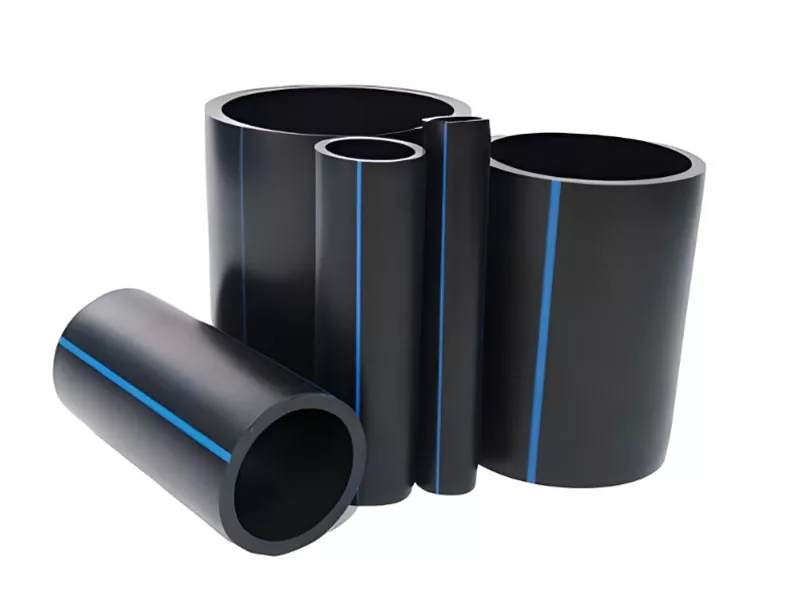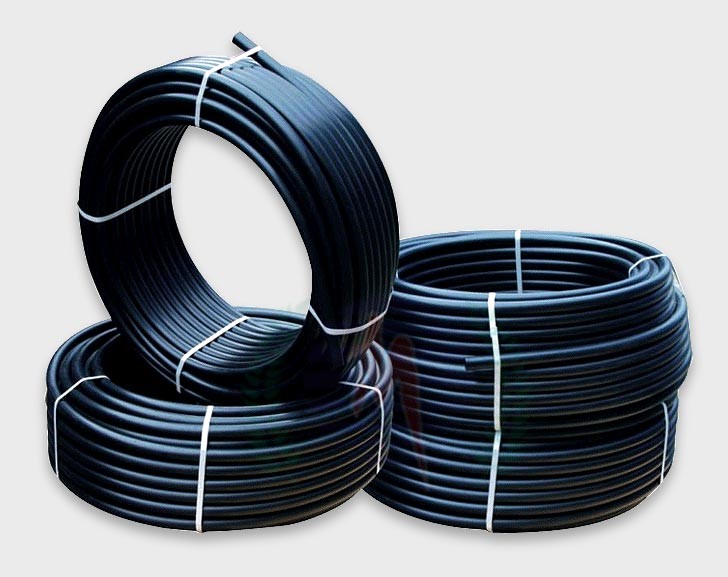The Necessary Steps for Effective Installation of HDPE Pipe in Your Following Job
Successful installation of HDPE pipeline calls for cautious planning and implementation. Secret steps consist of examining project demands, preparing the website, and choosing correct signing up with techniques. Each phase plays a crucial duty in guaranteeing the honesty and performance of the pipeline. Recognizing these important actions can substantially influence the general success of the task - Midland TX HDPE Pipe Fittings in Stock. The subtleties of each action might hold the key to getting rid of usual challenges dealt with throughout installment.
Understanding the Perks of HDPE Pipeline
High-density polyethylene (HDPE) pipe provides countless advantages that make it a preferred selection for different applications. Its high resistance to deterioration and chemicals assurances durability popular atmospheres, substantially prolonging the life-span of setups. Additionally, HDPE's adaptability allows for simpler installment, particularly in difficult terrains, as it can flex without damaging. The light-weight nature of HDPE pipe simplifies transport and handling, decreasing labor prices during installation.
HDPE pipeline is understood for its low friction coefficient, which boosts liquid flow and lessens energy consumption. Its seamless construction minimizes the risk of leaks, adding to better source monitoring and ecological security. Additionally, HDPE is recyclable, lining up with sustainable techniques and reducing environmental effect. Generally, the combination of strength, adaptability, and eco-friendliness makes HDPE pipeline a superior selection for a large range of tasks, from water distribution to commercial applications.
Planning Your HDPE Pipeline Installation
When intending a setup of HDPE pipeline, cautious consideration of a number of key variables is crucial to secure an effective task. Initially, project managers have to analyze the details demands of the pipe, including the planned usage, circulation prices, and ecological problems. Understanding these parameters will lead the selection of proper pipeline measurements and material grade.
Next, timelines should be developed, factoring in purchase routines and any type of potential hold-ups. Coordination with regional authorities for permits and regulatory conformity is likewise crucial. In addition, a thorough budget plan should be prepared, including all expenses related to products, labor, and equipment.
Lastly, it is essential to engage a certified group experienced in HDPE pipeline installation. Their expertise will certainly help alleviate dangers, assurance adherence to market requirements, and eventually add to the job's success. Comprehensive planning lays the groundwork for a smooth setup procedure and resilient efficiency of the HDPE piping system.
Preparing the Website for Setup
Correct website preparation is crucial for the effective installment of HDPE pipeline. Before installation starts, the website needs to be completely examined to ensure it satisfies all required demands. This includes evaluating the ground for existing frameworks, energies, and prospective dangers that might hinder the installation process.

Right elevation and placement need to be developed to preserve a regular gradient for drainage purposes. Correct water drainage around the setup website is also vital to avoid water buildup, which can result in issues down the line.
Techniques for Joining HDPE Pipes
Achieving a reliable connection between HDPE pipes is vital for guaranteeing the integrity and longevity of the installation. Numerous methods exist for signing up with these pipes, each suited for different project needs. Blend welding is just one of one of the most typical techniques, using warm to bond the pipeline ends together, producing a seamless and durable connection. This method can be more classified into socket blend and butt fusion, depending on the pipe setups.
Mechanical fittings are an additional alternative, utilizing clamps and threaded adapters to join areas of HDPE pipe. While usually faster to install, they might require added maintenance with time. Electrofusion is a specific method that entails utilizing electrical present to heat and fuse the pipelines through particularly created fittings, making certain a solid bond. Selecting the ideal signing up with method is important, as it directly impacts the overall efficiency and reliability of the HDPE piping system in the intended application.
Testing and Evaluation of Installed Pipeline
The testing and examination of set up HDPE pipes are critical to guaranteeing their functionality and longevity. This process incorporates aesthetic examination strategies, pressure testing approaches, and leakage detection treatments to identify possible problems. By using these methods, specialists can confirm the honesty of the setup before it is taken into use.
Aesthetic Evaluation Techniques
Employing reliable visual examination methods is important for ensuring the honesty of installed HDPE pipelines. Examiners should systematically analyze all visible areas of the pipe to recognize any signs of damage, misalignment, or inappropriate installation. Secret indications to assess include joint honesty, surface irregularities, and links. Inspectors might utilize devices such as magnifying glasses or cams to enhance exposure and information. It is vital to read more examine for indicators of environmental anxiety, such as twisting or excessive flexing, which might jeopardize performance. Regular documentation of searchings for allows for tracking modifications gradually and helps guide necessary repairs. By sticking to recognized visual inspection protocols, task groups can significantly decrease the danger of future failures and guarantee long-lasting dependability of the piping system.
Pressure Evaluating Techniques
Visual evaluation works as a preliminary step, yet it is not enough by itself to ensure the efficiency of installed HDPE pipelines. Stress testing techniques are crucial for making certain the stability of these systems. Normally, hydrostatic screening is utilized, where the pipes are full of water and subjected to pressure levels over the designated operating pressure. This method helps identify weaknesses or prospective leakages. Pneumatically-driven testing can also be utilized, although it carries greater threats because of the compressibility of air. Despite the method chosen, sticking to sector criteria and security procedures is crucial. After performing stress tests, detailed paperwork is required to confirm the outcomes and verify that the setup satisfies all operational demands before proceeding to the next phase of the job.

Leak Detection Procedures
Exactly how can one assure that mounted HDPE pipes are totally free from leaks? Efficient leakage discovery treatments are essential to secure the integrity of the system. Visual assessments need to be done, looking for indicators of water build-up or soil erosion around pipe joints. Following this, stress screening can confirm the system's strength. An usual approach is the hydrostatic test, where water is introduced under pressure, monitoring for declines that show possible leakages. In addition, progressed modern technologies, such as acoustic sensing units or infrared thermography, can identify leakages that may not show up. Regular tracking and maintenance further add to the longevity of HDPE pipelines, ensuring they remain leak-free throughout their functional life-span. Proper documents of these treatments is necessary for compliance and future referral.
Upkeep Tips for Long-Term Performance
To guarantee the durability of HDPE pipelines, developing a normal evaluation schedule is vital. This positive approach permits the very early detection of prospective issues, reducing costly fixings. Furthermore, executing proper cleaning strategies will aid maintain peak efficiency and protect against build-up that can influence functionality.
Normal Examination Set Up
HDPE pipes are known for their sturdiness and resistance to rust, establishing a regular inspection routine is vital for ensuring their long-term efficiency. Regular inspections help recognize prospective issues such as leakages, joint stability, and ecological influences that may influence the pipe's performance. It is advised that inspections happen a minimum of biannually, or more often in settings with extreme conditions. hdpe pipe fittings Midland TX. Throughout these evaluations, aesthetic checks should be performed to detect indications of wear or damages. In addition, utilizing technology such as ultrasonic testing can offer additional insights right into the pipeline's problem. By executing a structured assessment timetable, project managers can proactively attend to troubles, thereby prolonging the life-span of HDPE pipes and preserving system efficiency
Proper Cleansing Techniques
Appropriate cleansing techniques play a necessary function in maintaining the long-term performance of HDPE pipes. Routine cleansing avoids the buildup of particles, debris, and biofilm, which can bring about blockages and minimized circulation performance. Operators must utilize techniques such as high-pressure water jetting or foam cleaning to successfully remove contaminants without damaging the pipeline surface. It is crucial to stay clear of making use of harsh chemicals that might weaken HDPE material. In addition, set up upkeep checks ought to consist of aesthetic examinations for any type of indicators of wear or damage. Effectively educated workers need to accomplish these cleaning processes, ensuring conformity with safety and ecological regulations. By carrying out these techniques, the lifespan of HDPE pipelines can be substantially extended, ensuring optimal efficiency throughout their operational life.
Regularly Asked Concerns
What Are the Environmental Effects of HDPE Pipe Production?
The ecological impacts of HDPE pipeline production consist of greenhouse gas discharges, energy usage during production, potential plastic pollution, and obstacles in recycling. HDPE's longevity and resistance to corrosion can mitigate some environmental worries.
Exactly How Does HDPE Pipeline Compare to Various Other Materials?

What Devices Are Required for HDPE Pipeline Installation?
Essential devices for HDPE pipeline setup include a combination machine, pipeline cutters, shovels, determining tape, and security gear. Proper equipment warranties reliable, secure handling and setup, adding to the project's general success and integrity.
Are There Any Kind Of Particular Rules for HDPE Pipe Installment?
Particular laws for HDPE pipe setup differ by region, frequently controlled by regional, state, or government codes. Compliance with these laws warranties safety and security, environmental management, and performance, making adherence crucial for successful project end results.
Can HDPE Pipes Be Recycled After Usage?
Yes, HDPE pipes can be reused after usage. Their polycarbonate nature permits for reprocessing, making them appropriate for reusing right into brand-new items. This sustainability facet adds to environmental preservation and promotes round economy techniques in construction.